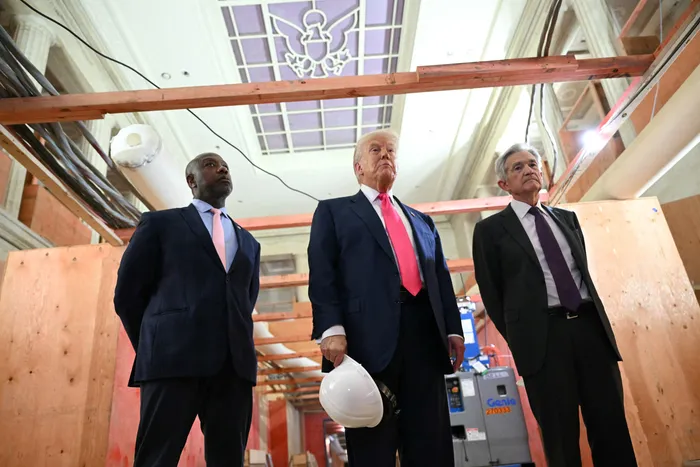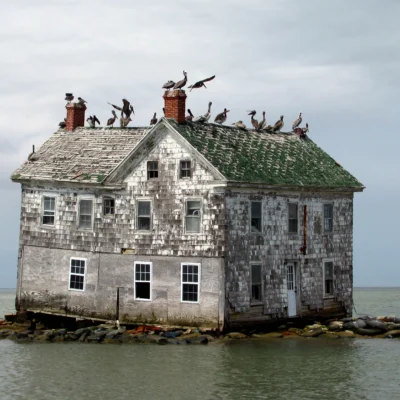In a surprise visit that quickly drew national attention, former President Donald Trump toured the Federal Reserve building in Washington, D.C., expressing strong criticism over the costs of its ongoing renovation project. The tour, which took place earlier this week, marks one of Trump’s rare appearances at a major federal institution since leaving office—and his remarks during the visit have stirred debate over government spending, priorities, and the role of the Federal Reserve itself.
A Spotlight on the Trump Federal Reserve Tour
The Trump Federal Reserve tour wasn’t just about walking through a historic building—it became a platform for the former president to speak out against what he called “runaway spending” on federal projects. Surrounded by aides, press, and select officials, Trump criticized the scope and budget of the renovation, which some reports suggest could reach hundreds of millions of dollars.
“This is government waste at its worst,” Trump said. “You’ve got marble, gold trim, chandeliers—they’re spending like it’s the 18th century.”
The visit was not officially scheduled as part of any government or campaign initiative, but insiders say it was coordinated to highlight Trump’s ongoing concern with federal expenditures ahead of the 2024 election season.
What’s Behind the Renovation?
The Federal Reserve building, officially known as the Marriner S. Eccles Federal Reserve Board Building, is undergoing an extensive renovation project. Initially approved in 2019, the renovation was deemed necessary due to structural aging, modernization needs, and increased security requirements.
The building has not seen a full-scale upgrade since the 1980s. According to internal Federal Reserve estimates, the project could cost upwards of $250 million. That figure includes:
- Updated HVAC systems
- Enhanced cybersecurity infrastructure
- ADA compliance upgrades
- Earthquake retrofitting
- Preservation of historic architectural features
However, to Trump, these improvements represent more than just functional updates—they symbolize what he believes is a pattern of unchecked government spending.
Trump’s Take: A War on Waste
During the Trump Federal Reserve tour, the former president didn’t mince words. His comments targeted both the scope of the renovation and what he described as a “lack of accountability.”
“Why are taxpayers footing the bill for fancy upgrades?” Trump asked. “We need secure buildings, yes. But we don’t need palaces.”
Trump’s comments resonate with a segment of voters who have long been critical of what they see as bloated federal budgets. His position isn’t just about the Federal Reserve—it’s part of a broader message he’s crafting in advance of a potential 2024 run: a return to fiscal conservatism, “America First” budgeting, and reduced bureaucratic spending.
Public Reaction: Divided Opinions
As expected, Trump’s statements during the tour sparked reactions across the political spectrum.
Supporters say:
- The renovation is too expensive and misaligned with current economic realities.
- Federal institutions must be held accountable for how they spend public funds.
- Trump’s visit puts necessary pressure on government transparency.
Critics argue:
- The renovation is long overdue and crucial for operational safety.
- Trump is using the Federal Reserve tour as a political stunt.
- Infrastructure investments often come with high costs—but long-term value.
One prominent political analyst noted, “Trump’s strategy here is clear—highlight government waste and tie it to Washington elitism. Whether it’s effective will depend on how voters view federal modernization.”
What Does the Federal Reserve Say?
Officials at the Federal Reserve have defended the renovation project, stating that it is essential for operational continuity, security, and preserving the historical integrity of the building.
In a brief statement, the Fed said:
“The renovation project has been approved through the proper government oversight channels. All expenditures are made in accordance with federal guidelines and are aimed at ensuring safety, efficiency, and accessibility.”
However, they did not directly respond to Trump’s criticisms, likely to maintain the Fed’s non-partisan stance.
A Deeper Look at Government Building Costs
Trump’s spotlight on the Federal Reserve building raises a broader issue that frequently arises in Washington: the cost of maintaining or upgrading aging government buildings. From the Pentagon to courthouses to post offices, many federal buildings require upgrades.
According to a 2023 report by the Government Accountability Office (GAO), over 60% of federally owned buildings are over 50 years old. Upgrades often require significant investment to meet modern safety, environmental, and accessibility standards.
Still, critics argue that some projects inflate costs due to poor oversight or an overly luxurious approach.
Trump’s Message: Back to Basics

The Trump Federal Reserve tour fits into a larger narrative the former president is pushing—returning the government to its core responsibilities and eliminating “non-essential” expenses. Trump has repeatedly stated that his second term (if re-elected) would focus on streamlining the federal budget, slashing unnecessary programs, and reining in bureaucratic overreach.
In a brief press conference after the tour, Trump said:
“We have veterans sleeping on the streets, small businesses drowning in taxes, and what is Washington doing? Spending hundreds of millions on walls, art, and antique floors. That’s not what America needs right now.”
Is This a Campaign Prelude?
Though the Trump Federal Reserve tour was not billed as a campaign stop, political observers see it as a strategic move to test new messaging for a broader audience. Trump’s criticism of renovation costs could be a preview of a larger economic policy platform focused on:
- Deficit reduction
- Scrutinizing federal agency budgets
- Auditing infrastructure projects
- Prioritizing public welfare over federal aesthetics
Aides close to the former president suggested that this type of “on-the-ground” spotlighting will continue in the months ahead.
What This Means for Future Oversight
With Trump once again drawing national attention to federal expenses, some lawmakers have called for more oversight into federal infrastructure budgets. Republican senators have suggested holding hearings to determine whether the Federal Reserve’s renovation costs are justified.
Meanwhile, fiscal watchdog groups such as the Committee for a Responsible Federal Budget welcomed the conversation.
“Regardless of your politics, examining how public funds are used is vital,” said Maya MacGuineas, the group’s president. “Transparency leads to better governance.”
Conclusion: The Power of Symbolism
The Trump Federal Reserve tour is more than just a walk-through of a building—it’s a symbolic gesture about how government spends its money, and who holds it accountable. Whether Trump’s criticisms are grounded in fiscal wisdom or political theater is a matter of perspective. But one thing is certain: the former president knows how to use symbolism to ignite national conversations.
As Americans prepare for another contentious election cycle, events like this will shape public opinion, especially on pocketbook issues. For now, the Federal Reserve renovation continues—and so does the debate about what federal spending should look like in modern America.
Read Next – Trump Homeless Policy: New Order Targets Street Crisis






